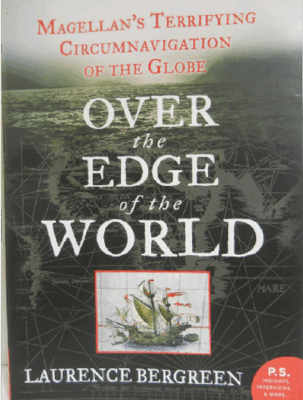 Every point of the Earth is the center of its own horizon.” Roger Bacon, an early advocate of the scientific method, said that in 1266. This is eerily similar to “No matter where you go, there you are,’ which Buckaroo Banzai said in 1984. This just goes to show: ‘the more things change, the more they stay the same,’ a phrase coined by Jean Babtiste Alphonse Karr in 1849. And so, apropos of nothing, I pose this question: Is there an actual ‘genre’ for books about Surveying and Mapping?
Every point of the Earth is the center of its own horizon.” Roger Bacon, an early advocate of the scientific method, said that in 1266. This is eerily similar to “No matter where you go, there you are,’ which Buckaroo Banzai said in 1984. This just goes to show: ‘the more things change, the more they stay the same,’ a phrase coined by Jean Babtiste Alphonse Karr in 1849. And so, apropos of nothing, I pose this question: Is there an actual ‘genre’ for books about Surveying and Mapping?
If there is, it’s a small one. There aren’t enough surveyors in the US, or the world, to send a compelling book about our area of interest up the bestsellers’ charts, that much is certain. However, Surveying and Mapping can easily be lumped into the blanket topic of ‘Exploration’ and there is clearly a reliable market for stories about Exploration and Explorers. From Magellan circumnavigating the Earth to John Wesley Powell rafting down the Colorado River to Franciso Orellana dropping down out of the Andes and then rafting down the Amazon, to Lewis and Clark hacking and canoeing their way across the wilds of the Louisiana Purchase and beyond, measuring and navigating was done under challenging conditions by many intrepid explorers and of course beautiful and important maps were subsequently drafted. Most of those adventures are made for great books.
This 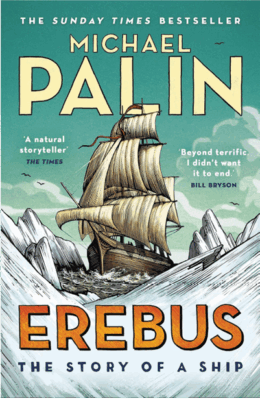 writer is a compulsive reader who tries to maintain a balance of new and old, fiction and non-fiction. But if forced to name a favorite theme, (other than 1950’s Sci-Fi), I would cite books about Explorers, Surveying, Mapping, Maps and all the ideas that those encompass. Sadly, at least for Mrs. Vang, I keep ‘em once I’ve read ‘em. So, my shelves are sagging under the weight of many books about my favorite topic. There are many more out there than you might realize. We’ve all seen and hopefully read the Andro Linklater books, Measuring America and Fabric of America and the Jefferson Stone by the great Silvio Bedini. And digging a little deeper, Longitude by Dava Sobel was a bestseller that was turned into a made-for-TV movie. There are plenty of books on Lewis and Clark, Mason and Dixon, John Wesley Powell, etc. There are dozens of books about navigating, surveying, measuring, and mapping the unknown, waiting to be discovered.
writer is a compulsive reader who tries to maintain a balance of new and old, fiction and non-fiction. But if forced to name a favorite theme, (other than 1950’s Sci-Fi), I would cite books about Explorers, Surveying, Mapping, Maps and all the ideas that those encompass. Sadly, at least for Mrs. Vang, I keep ‘em once I’ve read ‘em. So, my shelves are sagging under the weight of many books about my favorite topic. There are many more out there than you might realize. We’ve all seen and hopefully read the Andro Linklater books, Measuring America and Fabric of America and the Jefferson Stone by the great Silvio Bedini. And digging a little deeper, Longitude by Dava Sobel was a bestseller that was turned into a made-for-TV movie. There are plenty of books on Lewis and Clark, Mason and Dixon, John Wesley Powell, etc. There are dozens of books about navigating, surveying, measuring, and mapping the unknown, waiting to be discovered.
With the forbearance of my kindly editor, I will take a few of these books, search for the common elements and weave a convincing case for you to reach out to Amazon, Alibris or your public library, to find and discover them for yourself.
From M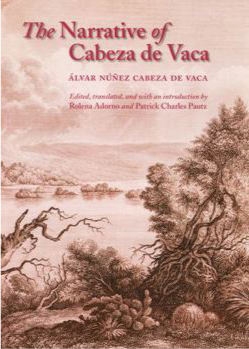 agellan’s perilous rounding of South America through what is now called the Strait of Magellan, which is so well described in Over the Edge of The World by Laurence Bergreen (Harper Collins, 2004), to the Erebus, and its sister ship the Terror, stranded in the ice while the crews of both slowly perished, the exploration of North and South America has been no easy feat. Every one of these stories starts with the premise that there is a better way to get from here to there, and some plucky crew of adventurers sets out to find that secret passage and then map it for others in the future.
agellan’s perilous rounding of South America through what is now called the Strait of Magellan, which is so well described in Over the Edge of The World by Laurence Bergreen (Harper Collins, 2004), to the Erebus, and its sister ship the Terror, stranded in the ice while the crews of both slowly perished, the exploration of North and South America has been no easy feat. Every one of these stories starts with the premise that there is a better way to get from here to there, and some plucky crew of adventurers sets out to find that secret passage and then map it for others in the future.
Sometimes it worked out, as in the case of the lone surviving ship and its crew of 30 (out of the original five ships and total crew of 270), though Fernão himself was killed by angry islanders in Cebu (spoiler alert) a mere five months before the crew successfully completed their three-year, 37,500 mile circumnavigation of the Earth. Sometimes it didn’t work out as in the case of the Erebus and Terror whose crews, stranded in the ice for two years, left their ships and died a few at time on barren ice-covered islands, without ever finding the elusive Northwest Passage (Alas, no maps came out of that expedition).
Our shared unquenchable thirst for knowledge and a taste for danger, generated all the exploration and subsequent maps of the western hemisphere. By the way, a great book about the Erebus, despite lacking solid conclusions about the crew’s descent into madness and cannibalism, was recently written by Michael Palin – yes, that Michael Palin (Hutchinson/Random House, 2018).
An obvious starting point would be the exploration of the Americas with Lewis and Clark’s expedition across the wild unknown of our own country. It was well conceived, well-staffed and well documented and serves as part of our American story. Many books have taken the source material, the journals of Meriwether Lewis and William Clark and woven a tale of determination and scholarly intent despite two years of hardship. I will come back to Meri and Will in a moment, but first, let me go back 276 years before Lewis and Clark set out on their voyage, to the year 1528.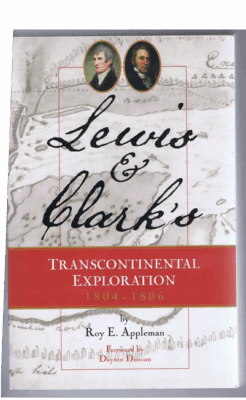
The Spanish sent the ill-conceived, ill-fated, and not well-known Narvaez expedition treasure hunting to what is now Florida. At that time, Cuba and parts of Central America were being explored and colonized (i.e., conquered), but North America, including Florida was Terra Incognita. Narvaez disembarked in force near what is now Tampa Bay, trod inland looking for riches and the troops pretty much all got shot with arrows, ended up starved and sick with swamp fever and decided to head home. Many fewer trudged back out of the swamps but by then their ship was gone. Desperate and disillusioned, they fashioned a series of simple rafts and attempted to sail to Mexico on them. No one had a good map of the Gulf of America (Mexico) back then and they underestimated the distance by a factor of ten. The rafts drifted and separated when they hit the outflowing current of the Mississippi River and only a couple rafts grounded near modern day Galveston, Texas. The rest were gone forever. One small group of survivors led by the expedition’s royal treasurer, Alvar Nunez Cabeza de Vaca, after enduring two years as prisoners of the natives, set out to walk to Mexico City, even though they had no idea where they were or where it was. The four men were in dire straits, but they befriended natives along the way. After four years of wandering, the group actually stumbled into Mexico City. Once repatriated and recovered, Cabeza de Vaca wrote a summary of their trip to the King of Spain. The journal was published and is still available today under a variety of names. The Narrative of Cabeza De Vaca edited by Adorno & Pautz (Univ. of Nebraska Press, 2003) is a good example.
This remar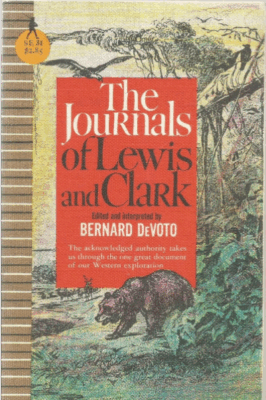 kable man drew maps and described animals, plants, and tribes that they had encountered, making him a cartographer, ethnographer, and amateur biologist. In the past twenty years, Cabeza de Vaca has been undergoing a rediscovery of sorts, and a slew of books has been written about his harrowing journey. The best of the bunch is A Land So Strange: The Epic Journey of Cabeza De Vaca by Andres Resendez (Basic Books, 2009) although there are plenty of others and they are all good reads because the story is so incredible. His translated account of the journey is spectacular, if only for the way he downplays each extraordinary challenge, as any humble man of God would.
kable man drew maps and described animals, plants, and tribes that they had encountered, making him a cartographer, ethnographer, and amateur biologist. In the past twenty years, Cabeza de Vaca has been undergoing a rediscovery of sorts, and a slew of books has been written about his harrowing journey. The best of the bunch is A Land So Strange: The Epic Journey of Cabeza De Vaca by Andres Resendez (Basic Books, 2009) although there are plenty of others and they are all good reads because the story is so incredible. His translated account of the journey is spectacular, if only for the way he downplays each extraordinary challenge, as any humble man of God would.
Now, back to Meriwether and William. Though three centuries had passed, the land was still completely wild and just like Cabeza de Vaca and his companions, these intrepid gentlemen found themselves dependent on the goodwill of natives, again and again throughout their trip. They paddled up rivers, hiked through treacherous mountain passes, nearly starved, and dragged themselves those last hard miles to the Pacific Ocean where they camped until they recovered enough to head back home. Their copious notes and documentation of all that they encountered and the maps they drew, which contained plenty of Terra Incognita, cracked open the ‘West’ for everyone that followed and influenced the botanists, biologists, geologists, and anthropologists who came after. They truly merged science and adventure, and their diaries have served repeatedly as the source material for numerous books, hitting a peak around the bicentennial of their journey in 2004. Of the several books written about Lewis and Clark, Roy E. Appleman’s Lewis and Clark’s Transcontinental Exploration (Jefferson National Park Association, 1980) is very good and extremely well-illustrated.
For my money, an older one, by Bernard De Voto, (Houghton Mifflin Co.,1953) is one of the best. De Voto, famous in his own right as a proto conservationist, uses a gentl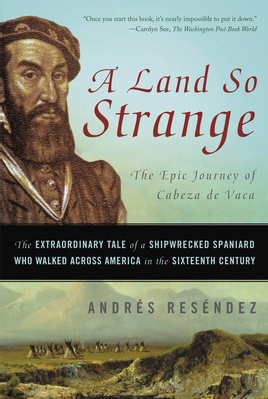 e hand and lets the explorers do the talking, via excerpts from their diaries. Incidentally, De Voto was a prolific author who also wrote a highly influential book called 1846 The Year of Decision, (Little Brown Co. 1943) in which he weaves together all of the factors that drove the US westward (and southward). It is a treatise on Manifest Destiny as the young country conceived it. De Voto describes the Mexican and American conflict coming to a head, the Mormons emigrating to Utah, and a looming third war with England over the Oregon Territory, while the so-called Mountain Men were leading endless wagon trains ever westward. De Voto also penned a classic book on North American Exploration, which won the National Book Award: The Course of Empire (Harper, 1953). If you could only read one book on North American exploration, this would be the one to read.
e hand and lets the explorers do the talking, via excerpts from their diaries. Incidentally, De Voto was a prolific author who also wrote a highly influential book called 1846 The Year of Decision, (Little Brown Co. 1943) in which he weaves together all of the factors that drove the US westward (and southward). It is a treatise on Manifest Destiny as the young country conceived it. De Voto describes the Mexican and American conflict coming to a head, the Mormons emigrating to Utah, and a looming third war with England over the Oregon Territory, while the so-called Mountain Men were leading endless wagon trains ever westward. De Voto also penned a classic book on North American Exploration, which won the National Book Award: The Course of Empire (Harper, 1953). If you could only read one book on North American exploration, this would be the one to read.
Now let us take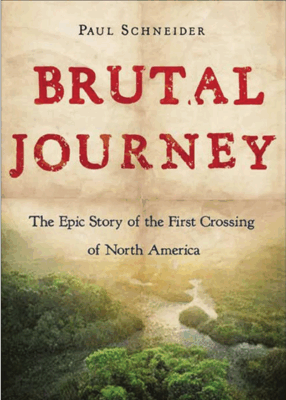 a brief foray into the Southern Hemisphere and talk for a moment about the exploration of the Andes mountains and the Amazon River Basin. Big topics with lots of possible departure points: Francisco Pizarro’s discovery, conquest and destruction of the Inca, the discovery of Machu Picchu, Darwin’s explorations from the HMS Beagle as it sailed up both coastlines, but one story in particular is consistent with our theme. That would be the first journey down the Amazon River by Spanish conquistador Franciso de Orellana, a compatriot, though a much less bloodthirsty one, of the infamous Pizarro brothers. Buddy Levy, an American Author with a wide range of subject matter has put a human face on Orellana in River of Darkness: Francisco Orellana and the Deadly First Voyage Through the Amazon (Bantam, 2011).
a brief foray into the Southern Hemisphere and talk for a moment about the exploration of the Andes mountains and the Amazon River Basin. Big topics with lots of possible departure points: Francisco Pizarro’s discovery, conquest and destruction of the Inca, the discovery of Machu Picchu, Darwin’s explorations from the HMS Beagle as it sailed up both coastlines, but one story in particular is consistent with our theme. That would be the first journey down the Amazon River by Spanish conquistador Franciso de Orellana, a compatriot, though a much less bloodthirsty one, of the infamous Pizarro brothers. Buddy Levy, an American Author with a wide range of subject matter has put a human face on Orellana in River of Darkness: Francisco Orellana and the Deadly First Voyage Through the Amazon (Bantam, 2011).
The year is 1541. Orellana is serving as lieutenant to the more savage and cruel Pizarro brother, Gonzalo. Pizarro, whose brother Francisco had conquered and destroyed the Inca a few years before, had decided to search for El Dorado, the “Golden Man,” in the Andes. Eventually the party of 220 Spanish mercenary soldiers, horses, and 4000 native slaves descends into the thick jungle of the Amazon, headwaters to the river of the same name. After desperate times, including attacks by natives, drownings and starvation, Pizarro orders Orellana and 56 companions to continue down the river while he and most of the party turn back.
Pizarro made it back to Peru, just barely, starving and in rags. Meanwhile, for the next year Orellana and his crew floated the entire length of the river basin, which w as unnamed at that time. Orellana described it as the ‘River of the Amazons’ and the name stuck. Eventually the ragtag crew arrived at the mouth and then, fighting the massive river current which threatened to sweep them out to sea, they somehow navigated up the coast of South America to a Spanish outpost where they were rescued. They were the first Europeans to explore the entire length of the Amazon and the first to witness the many different tribes of natives living in the jungle. The information they gathered on that journey allowed rudimentary maps to be made and also won him a governorship of the area, which he christened Nueva Andalucia. He died on a second expedition four years later, before he could benefit from being Governor.
as unnamed at that time. Orellana described it as the ‘River of the Amazons’ and the name stuck. Eventually the ragtag crew arrived at the mouth and then, fighting the massive river current which threatened to sweep them out to sea, they somehow navigated up the coast of South America to a Spanish outpost where they were rescued. They were the first Europeans to explore the entire length of the Amazon and the first to witness the many different tribes of natives living in the jungle. The information they gathered on that journey allowed rudimentary maps to be made and also won him a governorship of the area, which he christened Nueva Andalucia. He died on a second expedition four years later, before he could benefit from being Governor.
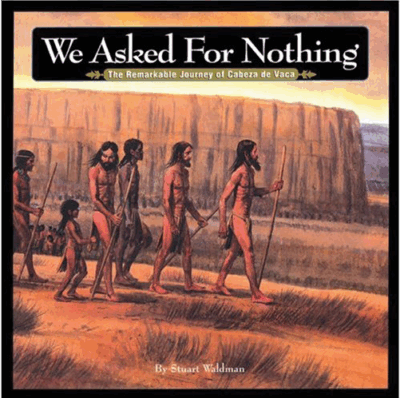 Only one of these hearty adventurers, William Clark, was an actual ‘surveyor,’ but all of them blazed trails followed by others and brought back copious data to start the mapping process. They persevered through extreme weather, starvation, animal predation, hostile natives, shipwrecks, tipped over canoes, loss of equipment, supplies and comrades and still pushed forward because it was the only way they knew. Like you and me, when we are given a survey project, right?
Only one of these hearty adventurers, William Clark, was an actual ‘surveyor,’ but all of them blazed trails followed by others and brought back copious data to start the mapping process. They persevered through extreme weather, starvation, animal predation, hostile natives, shipwrecks, tipped over canoes, loss of equipment, supplies and comrades and still pushed forward because it was the only way they knew. Like you and me, when we are given a survey project, right?
I encourage you to read these stories and as many others like them as you can before AI rewrites them all and extinguishes the unique light that is each author’s voice.